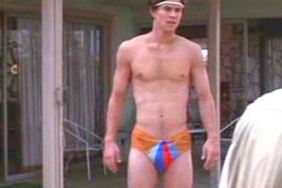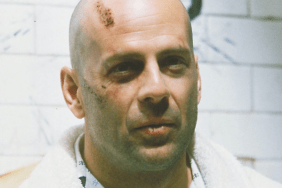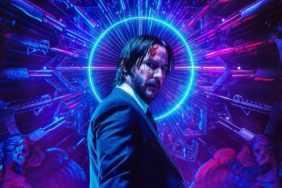
CraveOnline: Where did you find the structure in the Jimi Hendrix story?
John Ridley: The structure to me in that was it became self-evident. Everyone has traditionally looked at these biopics as being cradle to grave and some of them have been wildly successful but it has been done in that fashion, and it truly had been done with Jimi Hendrix. When I found this story, this singular story of one year in an amazing life, and there were so many things that when I learned about this story and I researched it that were new to me, that were fresh to me, that were exciting to me, those things that I felt were what I wanted my audience to feel.
So at that point, when you have a very tight, closed-ended story and it can have its own strength and drive of character, and it’s about a particular time. Also that space becomes about London and its own environment and its own eco-system and an era that, look, we’re 50 years on from that time period. A lot of people know there was music that came out of London but they don’t know that environment and why it was so creative and taking someone else, who for people who loved the blues, this was a guy who could really play it.
Drop him into that environment, how he changed that environment, how that environment changed him and how he came back to America truly at that point under the name Jimi Hendrix, that story was the story that I wanted to tell. Once you find that story, it’s odd with both that and with 12 Years a Slave, they were out there but they were arcane. When you see it, you go of course. Absolutely of course, with both of those stories.
What gave you the confidence to direct All Is By My Side?
It wasn’t so much the confidence to direct it purely out of ego, but as a writer I would be called in and pitch this version of the story. Once I found this version of the story, and this was going back years, people as a writer would call me in and say, “Hey, do you have a take on Jimi Hendrix? Do you have a way in?” I would say, “I found this story” and I would pitch it and not get a response and not get a response.
I remember one time I pitched it and the studio that I pitched it to was, “We don’t get it.” My thing was, look, if you don’t like it, that’s your prerogative. That’s always subjective what people are going to like or not like. My thing was this is history. This happened. It was real and these people were real. To not get it, at that point, I said look, if this story’s ever going to happen, and it’s going to happen with the passion that I feel and the depth of character that I see, then I’ve got to take a chance and step up and do it. I think that drive really translated in the film that you see. In some ways that was a good thing.
You ask where did that come from? It came from looking people in the eye and going, “You don’t see what I see? Then I’ve got to make you see it.” Part of making you see it is not waiting for somebody else to do it, it’s doing it. For me it turned out to be a fantastic experience because I got to put that passion into this film, and by the way, I got to collect a like-minded group of people who had that passion and had that drive, and you see that in the film as well.
Will there be a soundtrack?
I think there is an amazing soundtrack. I believe that there is going to be a soundtrack coming out but it is phenomenal in the sense that it is revelatory. You could go into this simply trying to go after the greatest hits and they are the greatest hits. There’s a reason we love what Jimi Hendrix did but I think the opportunity to go, “Oh, did you know he did this? And he played that. And by the way these are some of the other sounds that influenced him.” I really hope there is a soundtrack to go with it, because I just think as an anthropological study, it’s really fascinating and interesting.
By the way, the work that was done on the music here and what Andre added, when you get a guy like him and you get a creative space, the music is absolutely phenomenal so I do hope people have the opportunity to see it, obviously with the film but later on go back and go, “Oh, this was really cool. This was interesting. This is unique.” Then go out and find other music that’s related to it as well.
Did Andre Benjamin have his own ideas about Hendrix that added to what you were doing?
Oh absolutely. There’s one scene in the film, I went to Andre and he was a Hendrix fan coming in but he is a guy who is all about the study. We talked about the music but there’s one scene where he told me, “Remember, Jimi loved Bill Cosby.” There’s a scene in the film where there’s an argument going on but we’ve got Cosby playing in the background and it’s an amazing counterpoint to hear someone telling jokes and the laughter from the audience, but there’s something fairly harsh going on onscreen.
If you know anything at all about Jimi Hendrix, to know that he loved Bill Cosby, that’s that kind of richness that it’s not just about the music, but for someone like Andre who is a musician and an artist to go, “You know what, there’s a different kind of sound that can go in here as well” and I said, “That’s brilliant. That’s a keeper. That’s staying in.”
Do you have any other screenplays being produced?
Right now I’m doing a rewrite on my script for L.A. Riots that Justin Lin has come on board and Imagine is doing, Brian Grazer and Ron Howard. That’s my next thing up. It’s in tremendous shape. It’s a powerful story, different from but much like that personal narrative that you see in 12 Years a Slave and also in All Is By My Side where it really is focused on an emotional velocity and the characters as well as this very harrowing period in California, Los Angeles in particular, but America as well.
Who is the central character?
For me, because there was so much going on, I think with a lot of people, they look at the L.A. Riots and they think Rodney King and Reginald Denny and that was kind of it bookending it, something horrible happening to a black guy, something horrible happening to a white guy. But there were so many things happening in Los Angeles at that time, what was very important for me is to bring in, in that story, some multiple perspectives and really understanding why Los Angeles in particular was able to get to a place or fell to a place where people felt like they had no other way to express themselves, but taking it out onto the streets. Also the systemic failures that allowed it not just to happen but to continue for five days.
So different than being a narrative that’s very focused as it is in 12 Years a Slave – or in All is By My Side we have a couple of other points of view which I think is very important because people come into it thinking it’s just going to be about Jimi but it truly is about these lives and that era – with this film about the L.A. Riots, I really wanted to bring in that sense of tableau and mosaic that is going on, was going on in L.A. at that time and all of these aspects that did not work together and allowed the city to get to a place where there was nothing else could happen except what has been called The L.A. Riots. and why it was so particular to Los Angeles.
Are Denny and King characters in it?
No, they’re not. They are certainly there as well as some other very prominent figures, but to me it’s more about the city, about the citizens and about the people who failed the city, and also about people that, again, maybe unsung heroes who stepped up and really did extraordinary things.
Fred Topel is a staff writer at CraveOnline and the man behind Best Episode Ever and Shelf Space Weekly. Follow him on Twitter at @FredTopel.








